How NWN Carousel Is Changing Future Of Work As The Hybrid Work Company: CMO Andrew Gilman
NWN Carousel Chief Marketing Officer Andrew Gilman says that customers who are not implementing a hybrid work strategy are missing out on a big opportunity to bring employees back to the office.
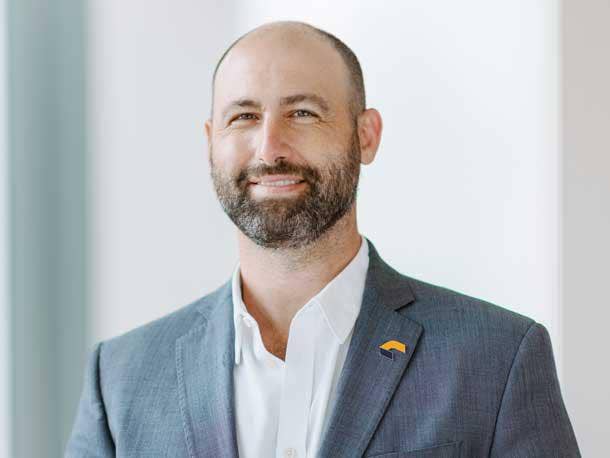
Making Hybrid Work A Reality
NWN Carousel Chief Marketing Officer Andrew Gilman says the fast-growing superstar, No. 34 on CRN’s 2022 Fast Growth list, is helping customers provide a “consistent” and high-quality hybrid work model.
“During the pandemic we saw organizations in triage mode of sustaining business with work at home,” said Gilman. “Now hybrid work is real and customers are looking at how do they make hybrid work actually work. It is no longer about swiping a credit card and getting by. It is about the employee experience being consistent whether you are working at home or coming to the office. It has to be consistent, frictionless and something that actually works and is sustainable.”
The hybrid work model is helping drive big sales growth, with NWN Carousel posting a two-year growth rate of 117 percent on CRN’s Fast Growth list.
Key to NWN Carousel’s hybrid work success has been its Experience Management Platform 3.0 that provides a single unified view across home and work with a secure and consistent view that encompasses Avaya, Microsoft Teams and Cisco offerings.
NWN Carousel customers embracing the hybrid work model with the Experience Management Platform are “transforming” the office experience and giving employees a reason to come back to the office to collaborate on projects, said Gilman.
“We are three years into this and we can’t be isolated anymore,” he said. “We have to have that [hybrid work] flexibility. This is all about creating hybrid work that is less filling and tastes great. This is not a forced march to the office….You want to create an environment that supports team building and camaraderie and gets that magic back of why we all love to work together.”
Gilman credited NWN Carousel CEO Jim Sullivan for driving the company’s shift to the hybrid work model. “When Jim Sullivan relaunched the company [in 2019], we went from a huge portfolio of hundreds of offerings down to five core capabilities [unified communications, contact center, network, security and devices],” said Gilman. “That got us into a great position because it was the right timing with the pandemic to help our clients through their time of need.”
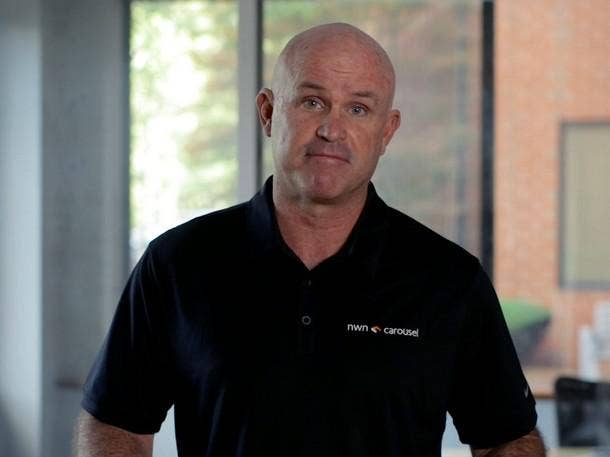
NWN CEO Jim Sullivan
When NWN CEO Jim Sullivan took the helm the company shifted to become a hybrid work solution provider. What has that journey been like?
We now have over 7,000 accounts. What is happening now is that our original hypothesis around going to the cloud is accelerating. Everyone is going to the cloud.
When Jim Sullivan relaunched the company [in 2019] we went from a huge portfolio of hundreds of offerings down to five core capabilities [unified communications, contact center, network, security and devices]. That got us into a great position because it was the right timing with the pandemic to help our clients through their time of need.
We had about 1,000 customers at that time. The business was growing well organically. That got us into an awesome position to do the deal a year ago with the Carousel team to create this new combined company.
We did sales bookings of well over $1 billion for calendar year 2021. We doubled our revenue as a combined company. The opportunity now is how do we continue to accelerate that.
We relaunched the business in September 2021 as NWN Carousel. We went from 1,000 customers to 6,000 clients. We retrained everyone. We added new capabilities.

What has been the biggest change you are seeing with hybrid work?
The big thing that has changed is we have seen organizations continue to drive adoption of hybrid work, During the pandemic we saw organizations in triage mode of sustaining business with work at home.
Now hybrid work is real and customers are looking at how do they make hybrid work actually work. It is no longer about swiping a credit card and getting by. It is about the employee experience being consistent whether you are working at home or coming to the office. It has to be consistent, frictionless and something that actually works and is sustainable.
From my own personal experience, when my kids came home and started getting on their devices if I didn’t have an NWN Carousel hybrid work experience with my own network I would have had a terrible experience working from home. This is not just a nice-to-have. This is how we are working now. And it is how we are going to be working for the foreseeable future.
What are you seeing from your OEM partners with regard to products and services supporting hybrid work?
The strategic OEMs that we work are shifting more of their focus to the cloud in the wake of supply chain issues, which are still a real problem.
Before, we were always ahead of our strategic OEMs with our strategy, now companies like Cisco and Avaya are retooling their own services. We are continuing to evolve with them to drive more cloud solutions to the market.
Our OEMs are delivering new capabilities so we are continuing to evolve our offerings, which are made up of our OEM capabilities plus our services and our Experience Management Platform, which has become super strategic. We are one of Cisco, Avaya and Microsoft’s top partners so we continue to align road maps and drive that transformation.
Our unique secret sauce is getting access to APIs into our EMP offering so we can drive differentiation and build new services and capabilities for customers.
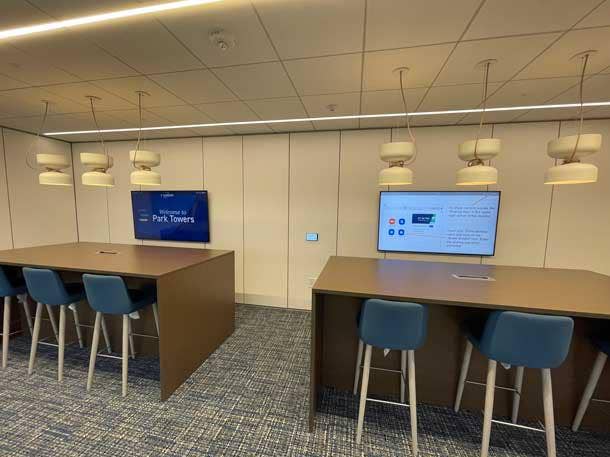
What do you see as the future of the hybrid and remote work model in the current hybrid work-remote work landscape?
The future of work needs to be less filling and tastes great. It has to be both. We have iconic companies here in Boston who are almost like in full capitulation mode of not going back to the office.
Some companies have made huge investments in buildings and are looking to sub those buildings out. This is a time when you need to get back together and you need to have investments in what does the future of the physical work environment look like. That is where a lot of people have gone wrong. They have not made the investments in their in-person experiences.
We are seeing a lot of demand from our progressive clients who are transforming the office environment and making it a compelling reason for employees to come back to the office to collaborate.
We are three years into this and we can’t be isolated anymore. We have to have that [hybrid work] flexibility. … This is not a forced march to the office. …You want to create an environment that supports team building and camaraderie and gets that magic back of why we all love to work together.
Otherwise, you have these bigger issues around attrition and people being not engaged. Some of our customers have overcome a lot of this. Some our higher-education customers are driving really great student engagement on campus but also giving those students everything they need to do whether they are at home or in dorm rooms. We are deploying very robust networks, ubiquitous Wi-Fi, great services like telephony and communications. There are also new metaverse experiences inside the classroom that drive engagement and help students learn. You are almost gamifying the higher-education experience.
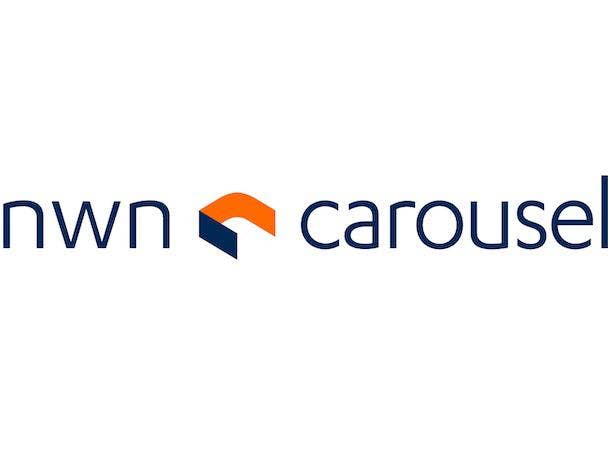
How would you describe the NWN Carousel model?
We have created NWN Carousel as the hybrid work company. We are the leader in integrated cloud communications, bringing everything from the carrier service and PTSN [public switched telephone network] to the wireless, the wired line, the infrastructure to the business communications applications whether it is a contact center you want to be able to run centrally or disaggregated, or a multiplatform unified communications service.
We were named Microsoft Global Partner of the Year for Microsoft Teams. We know it is a multiplatform world. Most of our customers are using not only Teams but also [Cisco] Webex and other platforms. So for us it is about creating that consistency of supporting multiplatforms and making it frictionless and seamless.
If you don’t have that consistency, it reduces productivity and creates friction. We bring it all together to create that consistent experience. We also give you device as a service. We also do audio visual collaboration with AV Rooms as a service from a huddle space to a conference room to a stadium facility.
Sports teams are monetizing their facilities, bringing people in to collaborate. It’s not a forced march to the office. It is go to the stadium of your favorite sports team and have a great collaborative experience or host an executive briefing. That is a great way to bring people together.
That is where we come into the picture as the future of the channel as a completely integrated cloud communications service provider. We deliver ubiquitous, equitable, secure, end to end hybrid work experiences. That has been a huge part of the growth story for the business.

What are you recommending to customers to provide a better hybrid work experience?
It starts with both sides of the equation. You have to have a great internet and connectivity experience because that is the glue that ties it all together. For example, if I am at home and I am riding on the same network as my kids with their iPads and Nintendo switches my core internet experience is going to be impacted by that.
With our carrier services we can provide dedicated network connectivity to the home the same way we can to an office environment.
Our Home Essentials bundle provides that service for everyone at a company. So everyone at the company can get their own dedicated networking lines into their homes on a per-user, per-seat, per-month basis. That could include a Meraki switch, a device like a smartboard, or something as simple as a smaller laptop. That is as a service with a predictable cost model on a per-user, per-seat, per-month basis.
We are taking care of it, patching it, if someone needs help they go to our help desk. Customers have access to our Experience Management Platform so they can submit a [work] ticket and not have it go into the ether of IT. The customer can see what’s happening with that ticket and interact and do self-help.
How critical has the Experience Management Platform been to the hybrid work model?
During the heat of the pandemic, EMP proved to be a key platform to help CIOs and IT administrators provide an incredible experience for their employees.
It was real time so customers could add, move and change services. It provided customers real-time analytics so if something was going wrong with an IT environment it was fixed immediately before the end users complained about it. You could actually see us meeting the service levels in real time.
And if you needed to add or change a user you could do that without having to call up a carrier and waiting a month. It created a much more dynamic experience for the IT staff.
We had customers that were federating EMP to their end users. So now their end users could log tickets and do self-help and self-care, and set up call-forwarding from their core systems all by themselves in a multiplatform world.

Are you seeing a greater shift to Home Essentials or Office Collaboration services?
We are seeing demand for both because some people are working from home and others are working in the office. So you want to have a consistent experience. We have experts that build out office rooms with audio visual systems.
Anybody can build these out with the shift from Capex to Opex. In the same way we have done Home Essentials we are doing [Meeting] Rooms as a service [in the office]. You can literally turn huddle spaces and conference facilities into a Software-as-a- Service model where we are doing everything from design, installation implementation and running it for our customers. We are putting QR codes on the door. If people need help, they click a button and somebody pops up who can help you get on to the service. We are doing that with a predictable cost model on a per- room, per-month on a three-year term. You can scale that up or down. It’s pretty cool. After three years we come back and refresh it.
What are you seeing with the preference from customers with regard to Opex versus Capex?
For a lot of CFOs, especially going into this economic cycle the ability to not have to make a capital outlay of millions of dollars to continue to drive a great and consistent employee experience is huge.
We see that trend [of Capex to Opex] accelerating. It’s not only what we are designing and delivering. Our OEM partners are also shifting towards that model.
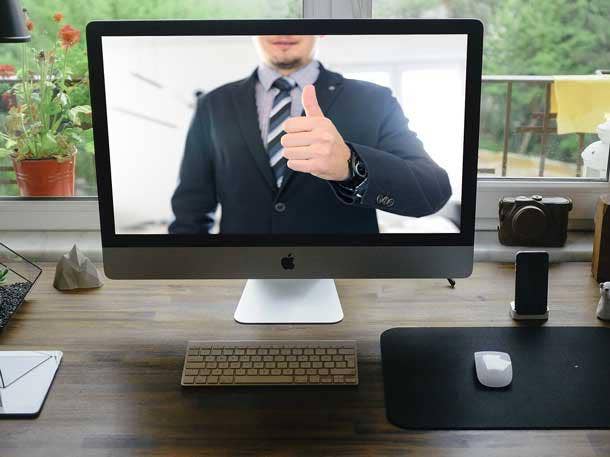
How has the hybrid work model impacted how customers look at making IT investments?
Before the pandemic, you might have been in an office environment with old Wi-Fi and only when people started really complaining would some companies upgrade it.
Those days are over because the employee experience is paramount. That obviously has an implication to your overall customer environment.
In 2007 core application services went en masse to the cloud really for the first time as a way to deal with that huge economic downturn. The pandemic I think was a similar moment for many organizations to transform all their business communications and move hybrid work to the cloud. It has changed the business model, the consumption model and the delivery model. That has changed the expectations for the channel, OEMs and, ultimately, for end users.
Where are you seeing the biggest traction with your top OEM partners?
Cisco, Avaya, Microsoft, HP, Palo Alto Networks and Fortinet continue to be among our top OEMs. This is all within the context that people are looking to refresh their device fleet more frequently because of this hybrid work scenario.
The complexity and the refresh cycles around hardware including network switches is accelerating. You are also putting this into the context that it is harder to get physical products.
We are still at the early stages of cloud communications. Many organizations especially in public sector still have on-premises PBX systems. They are still in that upgrade investment cycle. As technologists we are always ahead of this, but there are still many customers looking to leverage cloud communications for the first time.
PBXes are still prevalent, mostly in larger enterprises that made up-front capital investments and also in public sector agencies.

What have you seen with regard to why some customers have not made the move to implement hybrid work solutions?
A lot of folks have been triaging. They got into a pandemic situation and swiped a credit card or they departmentally had solutions that sort of got them by.
There is a difference between hybrid work and remote work and professional-grade hybrid work and remote work. You need to make this a sustainable go-forward strategy versus just getting by or doing what you were doing a little bit differently.
The great resignation, people quitting and people checking out are all symptoms of a poorly designed system or investments that have just not hit the mark. There is a technology element to it. There is a management philosophy element to it. We can work together with customers and provide better experiences through technology services that provide a better experience.
Not having a great setup for home and office workers could be a huge liability in the future. If you don’t have an equitable hybrid work technology strategy that could be a huge liability for your company going forward. Companies need to shift from just getting by.
How unique is this hybrid work company model that NWN Carousel is driving with customers?
We made this huge shift when Jim came into the company. We have a discrete set of services that are uniquely positioned in a market that allows people to go from the infrastructure layer of business communications to the device layer and then you have our own unique intellectual property on it with the Experience Management Platform.

Who are your biggest competitors in hybrid work?
The biggest competitor right now is those trying to DIY [do it yourself] this because we have a discrete set of capabilities.
Nobody is really doing the stack we are for hybrid work. That is why we are the hybrid work company. You need all this to work together to deliver a great employee and customer experience that is equitable and actually works.
How did the hybrid work model help customers during the pandemic?
Hartford Healthcare, which is a long-standing customer of NWN, during the pandemic needed to get all nonessential workers home. We gave them the devices, connected their systems, and provided the network and the security.
Then they needed to build field hospitals and clinics outside their four walls. We set up all those network services. Because of our scale from a supply chain perspective, we were able to get them the supply they needed to deliver these essential services.
When they got the vaccine we went into a Mohegan Sun Foxwoods—which is a customer of ours—and we helped them set up mega vaccination sites, connecting all the systems with tablets and phones that connected to the core network.

What kind of impact has the hybrid work strategy had in the sales trenches?
What is cool about being the hybrid work company, when I go on a sales call and it is not an NWN Carousel-based solution it is like doing the selling for us. It takes like an hour to get on the screen and get connected and then half the people are there, and I look like an ant on the wall and not able to talk and interact the same way as if we were in a managed hybrid work offering that is tuned for hybrid work.
How many companies are missing the boat by not implementing a real hybrid work strategy?
Most companies have an opportunity to do hybrid work a lot better. Every organization can take a step back from what they are doing and listen to their internal and external customers to see where they are missing the mark. Do they have a device that hasn’t been upgraded in two years? Are they trying to get employees back in the office but they haven’t upgraded the network in three years?
Sometimes employees go back into the office and it is an old setup. Why would people drive an hour to go meet with people if they can’t get on the internet or they can’t get any support because the IT staff is at home.
That is the opportunity. Every organization can take a look at what they are doing. Have they just been triaging and getting by, waiting for this to blow over? Or are they looking at creating a professional-grade hybrid work environment?